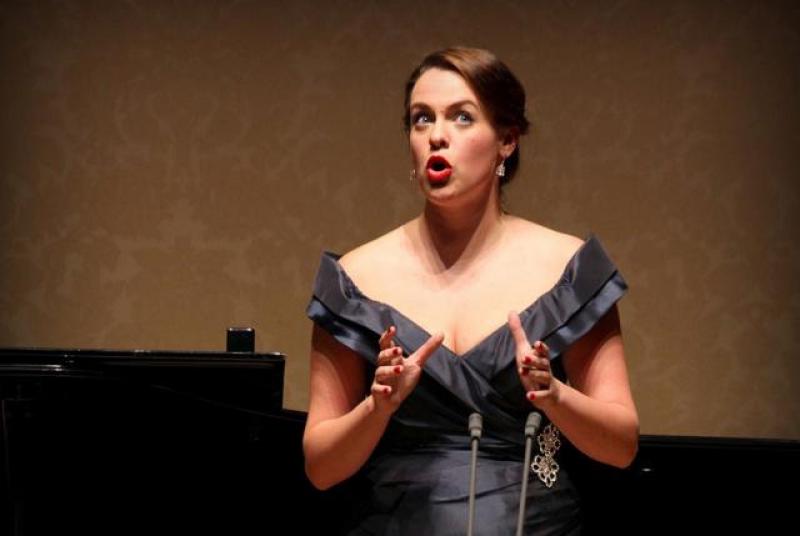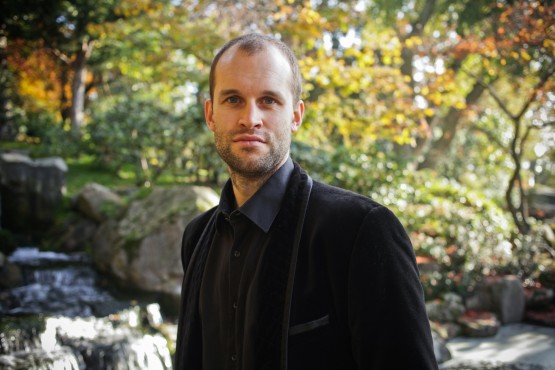Summerfield, Jackson, Riches, Classical Opera, Page, Wigmore Hall | reviews, news & interviews
Summerfield, Jackson, Riches, Classical Opera, Page, Wigmore Hall
Summerfield, Jackson, Riches, Classical Opera, Page, Wigmore Hall
Three outstanding singers and an early Mozart revelation focus on 1767

Young Amadeus is growing up in real time with MOZART 250, Classical Opera's ambitious 26-year project following its hero's creative life from childhood to the grave. 2015's start, marking two and a half centuries since the boy wonder's first visit to London, and its sequel had little to show of its main man, but plenty of other, senior composers flourishing in the same years.
Grabmusik, which Classical Opera's Artistic Director Ian Page neatly proposed in his programme note as a Holy Week "Cantata on Christ's Grave", offers an impressive counter to Bach's compact narrative genius, some 40 or so years on from the heyday of Mozart's idol. The Soul rages; the Angel proposes a transfiguration into penitence and pain. Perhaps it was the sheer dedication and involvement of two among Page's ever-inspired selection of brilliant young singers, soprano Gemma Summerfield and bass-baritone Ashley Riches, which lent conviction to an assumed air of gravitas, but I like to think that the boy Mozart, living under the shadow of mortality (and nearly dying from smallpox later that year), really did find something deep within for the anger and the consolation. Riches caught every light in the titanic first aria; Summerfield used her unique combination of vibrancy and white-note soul-piercing to offer genuine balm.
 It wasn't so easy for Summerfield, destined as I've written before for highest distinction in Mozart's lyric-dramatic roles before hopefully hitting the Strauss heroines, and her equally distinguished tenor colleague Stuart Jackson (pictured right by Sebastian Wybrew) to come in cold on plangency in the concert's first half; both, I suspect, had found it more rewarding to develop characterisations by degrees in Classical Opera's superlative concert performance last year of Jommelli's Il Vologeso. The suffering of Gluck's Admeto for his Alceste was the one point in the first half that went deep; but for all Jackson's sympathetic nuances, this was only a reminder of how fine-tuned Gluck is, in his reformed attempts at pure music-drama, to the dramatic requirements of the moment, how difficult it is to take his expressiveness out of context.
It wasn't so easy for Summerfield, destined as I've written before for highest distinction in Mozart's lyric-dramatic roles before hopefully hitting the Strauss heroines, and her equally distinguished tenor colleague Stuart Jackson (pictured right by Sebastian Wybrew) to come in cold on plangency in the concert's first half; both, I suspect, had found it more rewarding to develop characterisations by degrees in Classical Opera's superlative concert performance last year of Jommelli's Il Vologeso. The suffering of Gluck's Admeto for his Alceste was the one point in the first half that went deep; but for all Jackson's sympathetic nuances, this was only a reminder of how fine-tuned Gluck is, in his reformed attempts at pure music-drama, to the dramatic requirements of the moment, how difficult it is to take his expressiveness out of context.
Certainly nothing around the Gluck aria, "No, crudel, non posso", before the interval suggested much individuality. Mozart's early Symphony in F (No. 6), was more remarkable for the chance it gave us – despite a few untidy upbeats – to hear the focused brilliance of Page's Classical Opera players, how the upper strings flamed against cellos and bass resonance in Wigmore acoustics – less kind on the voices at the front, which needed more air around them – and how stylishly harpsichordist Steven Devine could enrich the rest with his flourishes. The second violins' pizzicati in the Andante were especially arresting, more like guitar strumming – Sophie Barber looks like a born leader – and we'd hear them again at the end in the original Mozart adapted for his symphony, a duet from Apollo et Hyacinthus.
 Summerfield made lovely sounds in "Frena le belle lagrime" from Abel's Sifari, but this is generic stuff and it wasn't Emilia Benjamin's fault if her diligent work on the viola da gamba obbligato was too reminiscent of the double-bass labours of Giilbert and Sullivan's Lady Jane in Patience. But then there was the shock of the Grabmusik and pure mature genius in the tenor aria "Vidit suum" from Esterhazy-era Haydn's Stabat Mater. The two-part unisons as the Virgin sees her son "dying, forsaken" meshed perfectly with Jackson's most concentrated, intimate tones.
Summerfield made lovely sounds in "Frena le belle lagrime" from Abel's Sifari, but this is generic stuff and it wasn't Emilia Benjamin's fault if her diligent work on the viola da gamba obbligato was too reminiscent of the double-bass labours of Giilbert and Sullivan's Lady Jane in Patience. But then there was the shock of the Grabmusik and pure mature genius in the tenor aria "Vidit suum" from Esterhazy-era Haydn's Stabat Mater. The two-part unisons as the Virgin sees her son "dying, forsaken" meshed perfectly with Jackson's most concentrated, intimate tones.
Arne's First Symphony gave us a succinctness which could have been applied to the less individual Mozart symphony if there hadn't been an insistence on repeats not worth hearing, and C major-minor ambiguity after the pure Sturm und Drang C minor of the second Haydn number. That was further happy territory for Riches (pictured above by Debbie Scanlan), but he got his moment in the sun, or shade, with more individuality at the end. Page apologised that the encore wasn't from 1767, but Telemann died in that year, and his startling hybrid Orpheus offered another flash of genius as the supreme musician mourns for his Eurydice and violently casts his lyre aside. Typical generosity from Page and company; his programming always goes beyond the call of duty in bringing the obscure to light and offering – as in Grabmusik – true revelation.
rating
Share this article
The future of Arts Journalism
You can stop theartsdesk.com closing!
We urgently need financing to survive. Our fundraising drive has thus far raised £49,000 but we need to reach £100,000 or we will be forced to close. Please contribute here: https://gofund.me/c3f6033d
And if you can forward this information to anyone who might assist, we’d be grateful.

Subscribe to theartsdesk.com
Thank you for continuing to read our work on theartsdesk.com. For unlimited access to every article in its entirety, including our archive of more than 15,000 pieces, we're asking for £5 per month or £40 per year. We feel it's a very good deal, and hope you do too.
To take a subscription now simply click here.
And if you're looking for that extra gift for a friend or family member, why not treat them to a theartsdesk.com gift subscription?

Add comment